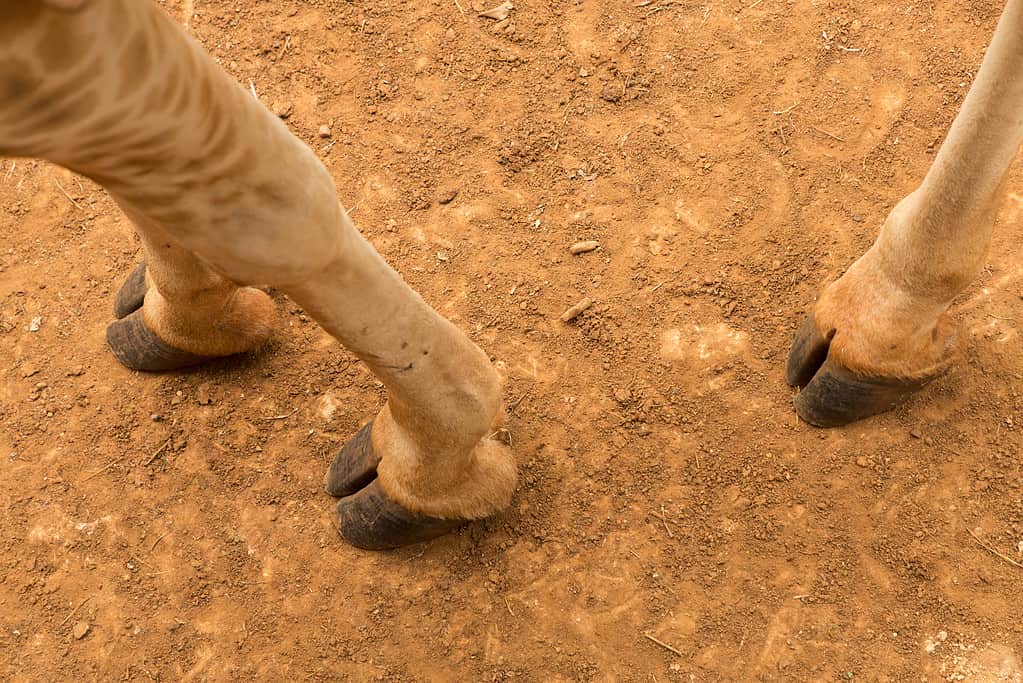Cloven-Hoofed Meaning
A cloven hoof, also known as a cleft hoof, split hoof, or divided hoof, is found on animals belonging to the Artiodactyla family.
Scientists divide hoofed animals into two groups: even-toed and odd-toed. Animals with cloven hoofs are considered even-toed mammals. These animals have two or four toes on each foot. Moreover, they carry their weight on their two large middle toes and the outer hooves are surrounded by a hard material. Some species of cloven-hoofed mammals have two smaller outer toes, which are called dewclaws. Additionally, the two toes can spread out, helping the animal have more balance on uneven surfaces.

Animals with cloven hoofs have two or four toes on each foot and carry their weight on their two large middle toes.
©iStock.com/LindaMarieCaldwell
Cloven-Hoofed Pronunciation
Cloven-hoofed is pronounced as [kloh | vuhn | hooft | –hooft].
What Are Hooves?
A hoof is the hard part of an animal’s foot. A tough protein called keratin makes up the hoof. Likewise, human hair and nails are also made of keratin.

A hoof is the hard part of an animal’s foot made of a tough protein called keratin.
©iStock.com/Tunatura
Examples of Animals With Cloven Hoofs
Some of the more common animals with cloven hoofs include:
Characteristics of Cloven-Hoofed Animals
There are some differences between even-toed and odd-toed mammals. Animals with cloven hooves digest food differently than other animals. Even-toed ungulates, except for pigs, are ruminants. This means they have multi-stomach digestive systems to help them digest plant material. These animals all chew the cud.
Another common characteristic of even-toed animals is that many of them have some type of antlers or horns.
What Are the Benefits of Having Cloven Hooves?
A cloven hoof helps animals have better balance on uneven terrain. In contrast, animals that live on solid, flat ground, such as horses, don’t need the extra balancing ability that comes from having split hooves.
One example of this is the agile mountain goat that uses its two toes to help it grab onto the terrain as it climbs over rocks and ledges in its mountain home.

Mountain goats use their two toes to help grab onto the mountainous terrain as it climbs over rocks and ledges.
©Diane Garcia/Shutterstock.com
What Is the Religious Significance of Cloven-Hoofed Animals?
Observers of the Jewish faith follow certain dietary laws. They can only eat animals that ruminate (chew their cud) and have cloven hooves. This is why observers of Judaism can eat cows, but not pigs. (pigs do not ruminate.)
Fun Fact: Although they do not have hooves, whales, dolphins, and porpoises are even-toed ungulates. They are descended from the early Artiodactyls, and over millions of years, their hooves evolved into flippers.




